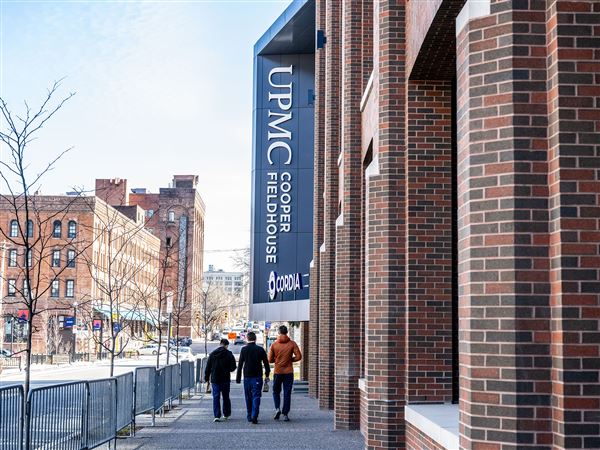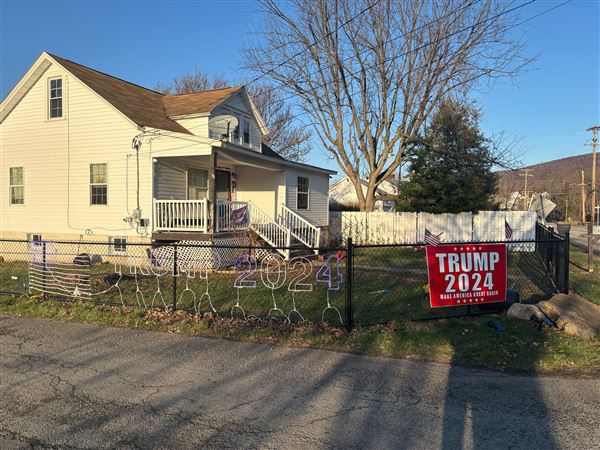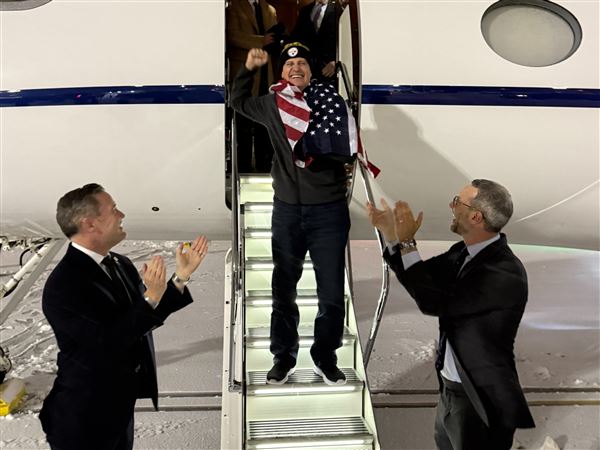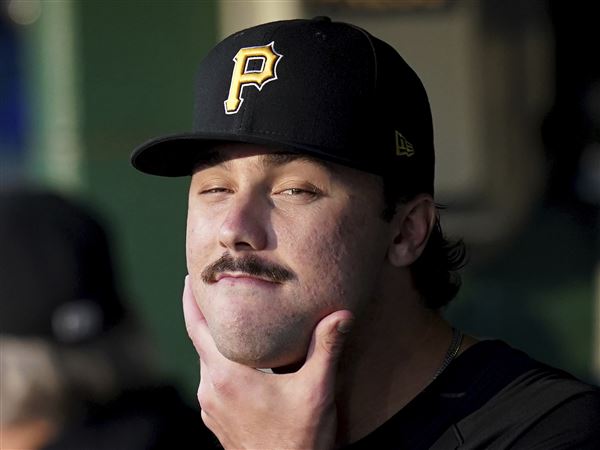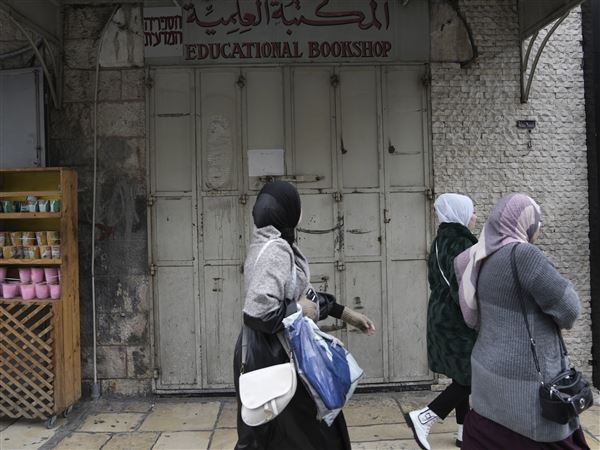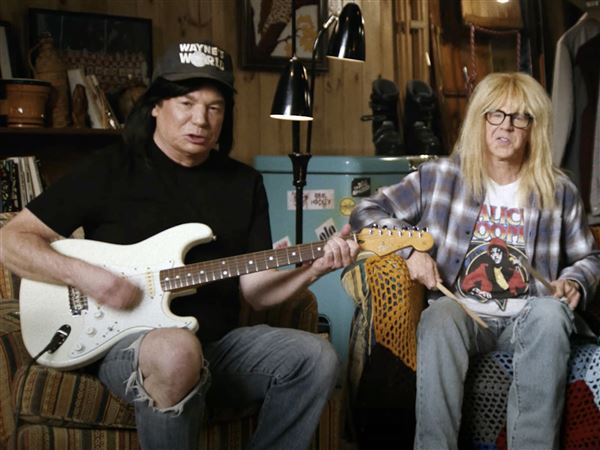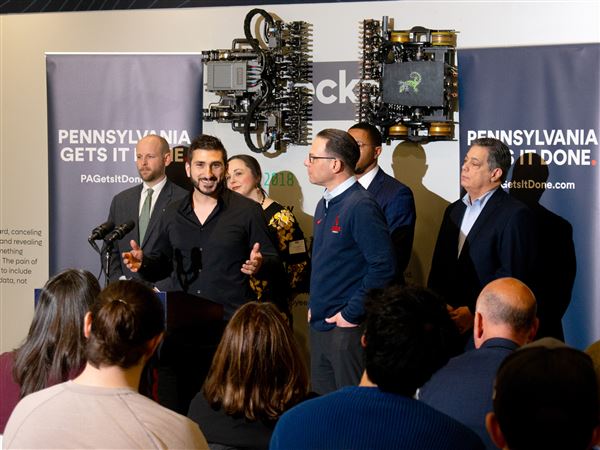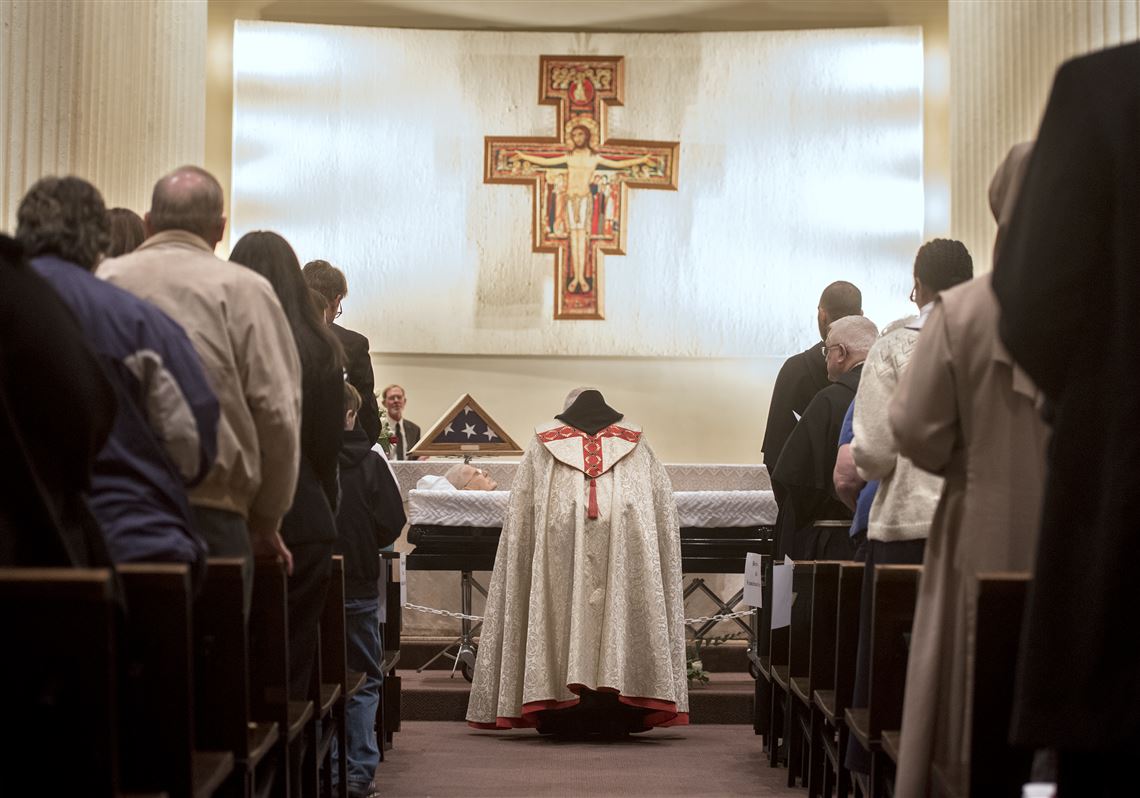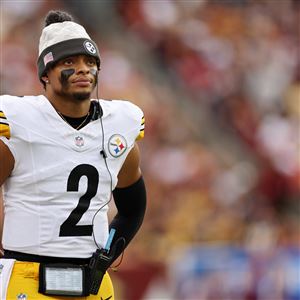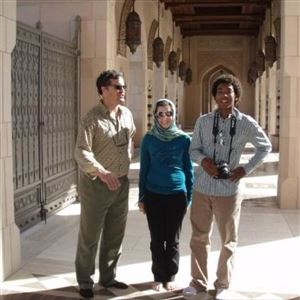STEUBENVILLE, Ohio — For hours on Tuesday afternoon, mourners filtered in to the round, concrete Christ the King Chapel on the campus of Franciscan University of Steubenville. They paid respects to the Rev. Michael Scanlan, the former longtime president who by all accounts is responsible for the university being there in the first place.
The white-haired Father Scanlan, who died Jan. 7, lay in an open casket beneath a Christ candle, symbolic of resurrection, and a framed and folded American flag, a tribute to the Harvard-educated lawyer’s military service. He’s remembered as a fiery preacher, a leader in the revivalism of the Catholic charismatic movement and as the turnaround specialist who put a provincial college on the map as a powerhouse of conservative Catholicism.
Young nuns wearing traditional habits arrived at the chapel, many from the religious orders that have sprouted around Steubenville within the university’s orbit. Also lining up to pay respects were university staff members, out-of-state visitors, city residents and the occasional students who happened to be on campus during Christmas break.
Many knelt on the hard floor before Father Scanlan’s casket. Some handed rosaries or other objects to the friars, who would hold the objects to Father Scanlan’s chest for a moment, then bless them with the sign of the cross before returning them to their owners.
Such objects could one day be considered relics if Father Scanlan is ever declared a saint of the Catholic church, one observer noted. “He will be!” said another, overhearing the remark.
Orthodoxy U.
If so, that would be well in the future, but the traditional devotions performed at his vigil well represent the legacy Father Scanlan left at Franciscan University, which he led as president from 1974 to 2000, and turned from a struggling regional Catholic college into what the Pittsburgh Post-Gazette dubbed “Orthodoxy U.” as far back as 1989.
That was the year its theology professors and priests began taking oaths of loyalty to proclaim Catholic dogma — which has ever since been an annual event under Father Scanlan and his successors.
That was also the year Father Scanlan was arrested for civil disobedience in protesting at an abortion clinic. The university has similarly been on the front lines of culture wars opposing legalized same-sex marriage and other causes. At a campus memorial to unborn children, the remains of seven aborted fetuses are interred.
The university may share the namesake, St. Francis of Assisi, as does the current pope. But at its memorial, speakers reveled in its being known as a stronghold of the Catholicism exemplified by a previous pope, St. John Paul II, known for his traditionalist doctrine and globe-trotting evangelism. One of Pope Francis’ most prominent U.S. critics, Cardinal Raymond Burke, spoke to a supportive crowd of several hundred during a visit last year.
The Rev. Nathan Malavolti, vice president of pastoral care and evangelism, had earned a doctorate in chemistry but came to Franciscan in 1988 to begin training for the priesthood at the example of Father Scanlan, who left his law degree for a similar vocation.
“Father Mike’s story inspired me,” he said. “I wanted to do the same. “
Franciscan University is ranked 22nd among regional universities in the Midwest by U.S. News, but Franciscan University and Father Scanlan’s legacy extend an influence far behind this hilltop campus overlooking the Ohio River.
It claims a wide-ranging alumni corps of hundreds of priests, nuns and religious brothers as alumni, not to mention numerous lay leaders. It has nearly 600 undergrad and more than 400 graduate students working toward degrees in theology or catechetics (religious education).
The university also reaches about 50,000 young people each year with summer conferences, with worship sessions reaching the energy of arena rock-concerts mixed with with hushed moments of return to traditional practices such as confession and praying before the Eucharist.
“God is doing something special here, that God would just take this little steel mill town and manifest his glory here,” said theology professor Bob Rice, who came here to get a master’s degree in the 1990s. Father Scanlan “is Franciscan University.”
Emily Allsteadt, a junior majoring in theology and catechetics, recalled attending such conferences in her native Atlanta and said that many of her peers made crucial spiritual commitments during such events.
She and Rachel Solomon of Boston, a freshman majoring in English and psychology, were among the few students at the vigil because their swim team schedule had kept them on campus during the winter break.
“He’s given so much to us, this is the least we could do,” Ms. Solomon said after they paid their respects to Father Scanlan.
Father Scanlan was born on Long Island, N.Y., in 1931 and earned his undergraduate degree from Williams College in Massachusetts, before earning a law degree at Harvard and serving as a U.S. Air Force staff judge advocate. Father Scanlan, who reported sensing God’s voice at least since his college days, made his first vows to enter the Franciscans’ Third Order Regular in 1959 and was ordained a priest in 1964.
He served as a dean at what was then called the College of Steubenville and as rector of St. Francis Seminary in Loretto, Pa., both schools affiliated with his order.
He was named president of the College of Steubenville in 1974, which had ridden a boom of post-World War II enrollment but, like many small religious colleges, was then suffering declines in students and finances.
In a memoir, “Let the Fire Fall,” Father Scanlan recalled more problems than that: “Alcohol and drugs were the currency of college social life. Dorm life was full of promiscuity and predatory sex. At registration, I noticed how the upperclassmen hung around the incoming freshman women like jackals surveying their prey. ... Many of the students routinely got drunk on Saturday night and slept all day Sunday.”
Right-hand turn
The board gave him a free hand to turn things around, and some administrators who opposed the hard-right turn were replaced, Father Scanlan later recalled: “Who could object to you doing something to keep it open? ... Had the University been doing much better, we never could have made changes nor had that much success.”
Some changes were educational, such as recruiting professors with doctorates rather than just master’s degrees, and many were spiritual. He set up a long-lasting “household” system in which small groups of students would regularly meet, worship and pray together and look after each others’ spiritual welfare.”
“A lot of college students experience isolation,” said longtime theology professor Alan Schreck. Franciscan became a “place where religion was not something just in the chapel or the classroom, but there would be a supportive faith environment.”
The school’s finances soon stabilized as enrollment, and donations, grew. New campus buildings arose. Undergraduate enrollment, which was about 1,000 in 1974, quickly rose to just over 2,000 — where it stands today, along with more than 600 in graduate programs.
For Mr. Schreck, the aim was not a heady "some sort of narrow Catholicism” but a “dynamic Orthodoxy” combining a commitment to church authority with evangelistic outreach. “That really began to attract theology majors,” now at about 500, he said.
And the school fosters a range of spiritual expressions, from the traditional Latin Mass to contemporary worship reflecting the spirited charismatic movement that was central to Father Scanlan’s ministry.
But not everyone fits in, said alumnus Andrea Molinari of Florida.
Hecq has positive memories of Father Scanlan. But he questions the university’s direction. With professors taking oaths of fidelity to doctrine, “you right-off-the-bat set up artificial barriers to free thought and free speech,” said Mr. Molinari, who graduated in 1989 and later earned a doctorate in theology from Marquette University, and worked for more than two decades as an author and in various lay ministries.
Some students “don’t really fit into the ultra-conservative take on Roman Catholicism, and they find there is no place for them,” he said. “It helps some people and it grinds other people into the ground, and their stories are seldom told.”
Father Scanlan’s role in the charismatic movement came under scrutiny during his tenure. The movement, which began in the late 1960s, combined Roman Catholic worship with things normally associated with Protestant Pentecostalism, such as claims of miracle healings and speaking in tongues.
Father Scanlan himself reported being used by God to bring healing to others. He also served as spiritual leader of a charismatic congregation in Steubenville, Servants of Christ the King. In 1991, Bishop Albert Ottenweller asked Father Scanlan to step down after reports that leaders in the group, influenced by an affiliated group in Michigan, were excessively controlling members lives, including their marital relations and finances.
Bishop Ottenweller put a diocesan priest in charge of the parish.
“We submitted to everything the bishop wanted, and Father Mike was therefore no longer pastor,” said Mr. Schreck, who was a participant. He said this was “typical of a lot of Catholic charismatic communities. A lot of things had to be adjusted,” including affirming the bishop’s authority over such communities.
Father Scanlan served as the university’s chancellor from 2000 to 2011, when he retired to the motherhouse of his Franciscan Province of the Most Sacred Heart of Jesus in Loretto, Blair County. He was buried at the cemetery there following his funeral Thursday in Loretto.
Peter Smith: petersmith@post-gazette.com or 412-263-1416; Twitter @PG_PeterSmith.
First Published: January 15, 2017, 5:00 a.m.
